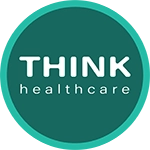The Monday morning scenario
When a patient tries to call their GP surgery to book a doctor’s appointment after a weekend of feeling unwell, they will often find themselves joining the end of long queue. Wait times can drag on and the urgent cases may get stuck in line with the general enquiries, potentially putting vulnerable patients at risk. Meanwhile, reception staff are trying to handle and queries from in-person patients while trying to answer every call to keep queues down. It is stressful for everyone involved.
Why can’t traditional GP surgery phone systems cope?
Demand has increased but phone systems do not have the capacity for the rise in incoming calls from patients alongside the need for more outgoing triage calls from GPs and clinicians. The number of lines is limited on a traditional phone system, often using more handsets than lines available. This means some patients may be met by the busy tone and/or doctors and other staff will not be able to call out.
The way we work has changed too with some staff required to work from home at times or at other branches. Older GP phone systems just do not offer this flexibility.
Most surgeries use a clinical systems, such as EMIS, SystmOne and Vison. Older phone systems cannot integrate with these systems to ease, and speed up, the call handling process to drive down queues and patient complaints.
Unanswered calls and long queues mean the patient experience is less than satisfactory and they may feel compelled to lodge a complaint or abandon their wait completely. This means they may end up relying on emergency services or out-of-hours care, which are also under immense pressure or, potentially worse, just hope they get better without medical intervention.
New-look primary care technology
Enter the cloud-based phone system, recommended by the NHS as the way forward to help GP surgeries embrace digital transformation and to improve patient access. These solutions offer unlimited line capacity and flexible options for remote working, so staff can easily handle higher volumes of inbound and outbound calls wherever they are working.
Integration with patient management software means staff have instant access to a patients’ records when answering calls and clinicians can click to dial to save time and to avoid mis-dialling.
Queue busting healthcare contact solutions
At Think Healthcare, we have gone a few steps further to enhance these GP surgery phone systems, including our queue busting feature. This is a call-back service to help surgeries drive down queues.
Rather than wait for their call to be answered, patients can choose to request a call-back. This means they can rest up if they are feeling unwell or carry on with more productive tasks. A member of staff will they call them back at the point they would have reached the front of the queue.
This represents a far less stressful way to book an appointment and also takes the strain off reception staff. They still carry out the same volume of work but in a more controlled and calm way.
This means patients do not just give up on trying to call their GP surgery and therefore this means patient access is enhanced. Meanwhile, happy patients mean happy staff with less frustration leading to less complaints.
Not all GP surgery phone systems come with this level of functionality. Think Healthcare’s experts have used their experience to develop a patient contact system that blends cloud-based phone systems with contact centre and clinical management software to meet QOF and funding targets. Contact us if you want to find out more.

